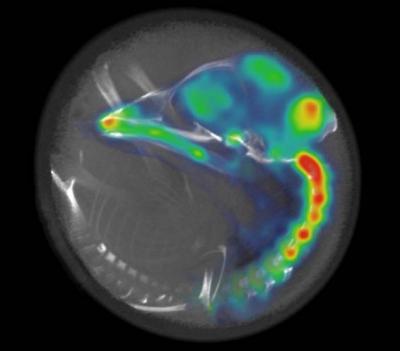As modern medicine continues to push back the gestational age at which prematurely born infants can reliably survive, pediatricians have worried about the effects of stimulating brains that are still 'under construction'. It turns out that,like adult brains, embryo brains also have neural circuitry that monitors the environment to selectively wake the brain up during important events.
That waking-like brain activity appears in a latent but inducible state during the final 20 percent of embryonic life, the researchers found. At that point, sleep-like brain activity patterns also emerge. Before that major dividing line in development, the first 80 percent of embryonic life, "embryos are in a state that is neither like sleep nor waking," said Evan Balaban of McGill University. He suggests it may be useful to compare that state to what happens when people are comatose or under the influence of anesthesia.
The study was made possible by a new generation of molecular brain imagers developed by Balaban's coauthors Juan-José Vaquero and Manuel Desco at the Universidad Carlos III in Madrid. The machines can detect very small amounts of tracer molecules and pinpoint them to a tiny region of the brain - less than 3/100ths of an inch. The researchers said they were surprised to capture waking-like activity before birth. They were also surprised the embryo brains they observed showed considerable variation in activity.

X-ray computed-tomography image of the chicken embryo skeleton inside an egg, which shows the developmental stage, together with a positron emission tomography image showing nervous system activity in the brain. Balaban et al., report the activity in chicken embryo brains is inversely related to behavioral activity, with different sleep-like states emerging for the first time. Playing meaningful sounds selectively induced patterns of embryonic brain activity similar to awake, post-hatching animals. Image 3D rendering by Carmen García-Villalba. Credit: Balaban et al. Current Biology
Before the emergence of sleep and waking patterns of brain activity, the chick embryos in their study exhibited lots of spontaneous movement, even as their higher-brain regions remained inactive. Once the chicks reached that 80 percent mark in development, higher-brain regions began crackling with activity. At the same time, those physical movements ceased as the embryos entered a sleep-like state.
"The last 30 percent of fetal brain development is a more interesting time than we previously thought, because it's when complex whole-brain functions that depend on coordination of widely separated brain areas first emerge," Balaban said. "Embryos begin to cycle through a variety of brain states and are even capable of showing waking-like brain activity."
That might explain instances of complex fetal and early neonatal learning. "It also raises questions about the longer-term developmental consequences that such brain activity may have, if it is induced before intrinsic brain wiring is sufficiently completed," Balaban said, "for example, in babies born very prematurely. We are excited by the possibility that the techniques developed here can now be used to provide answers to these questions."
Published in Current Biology.




Comments